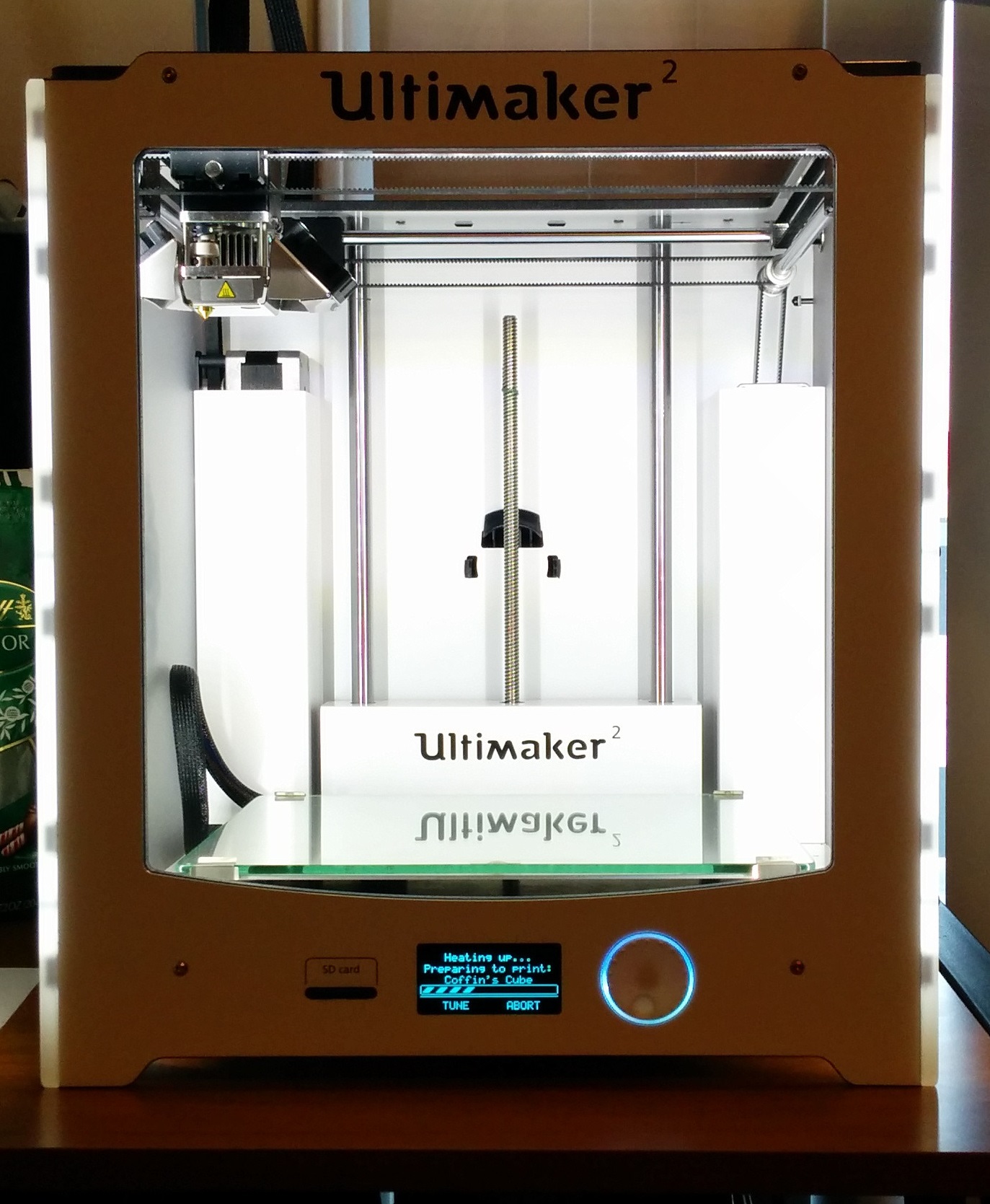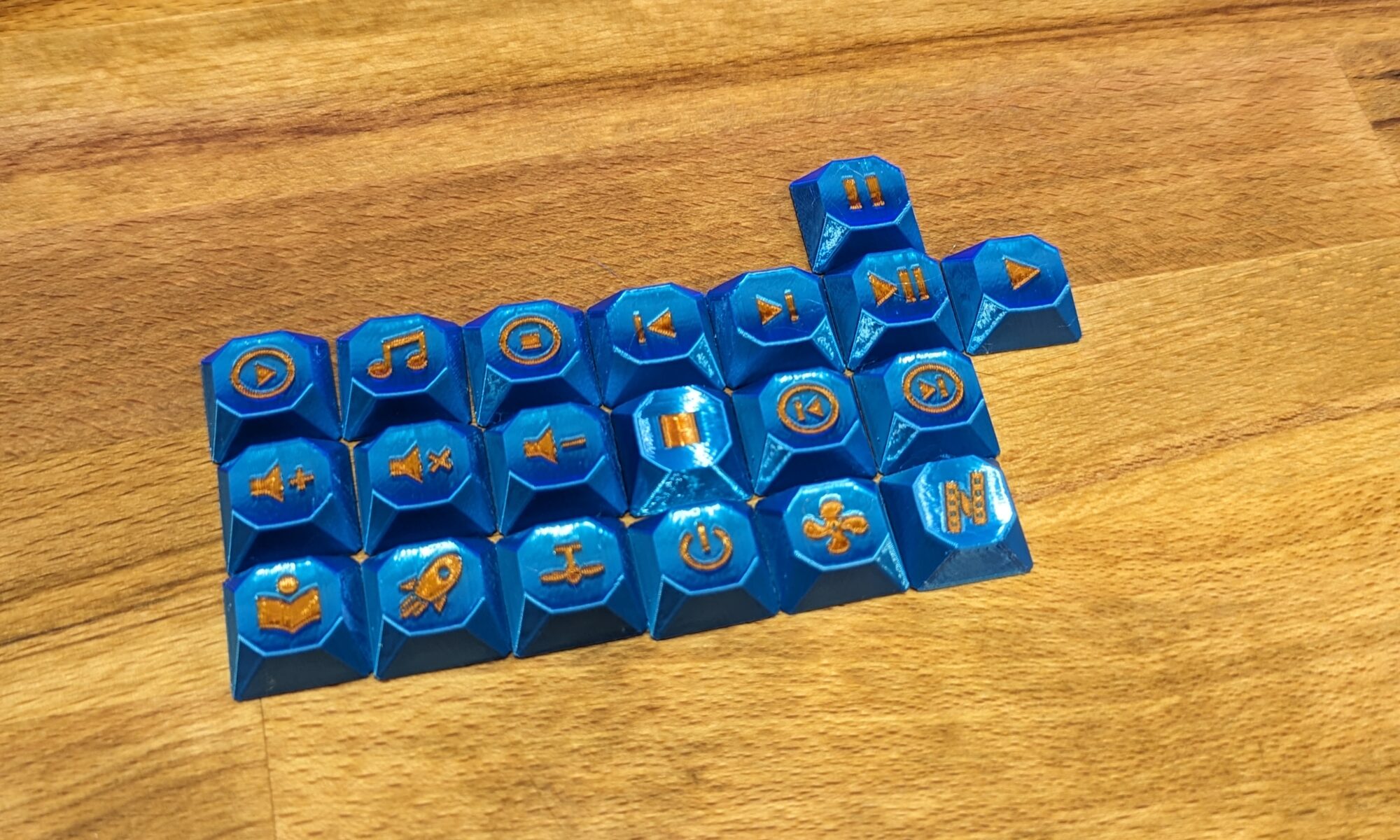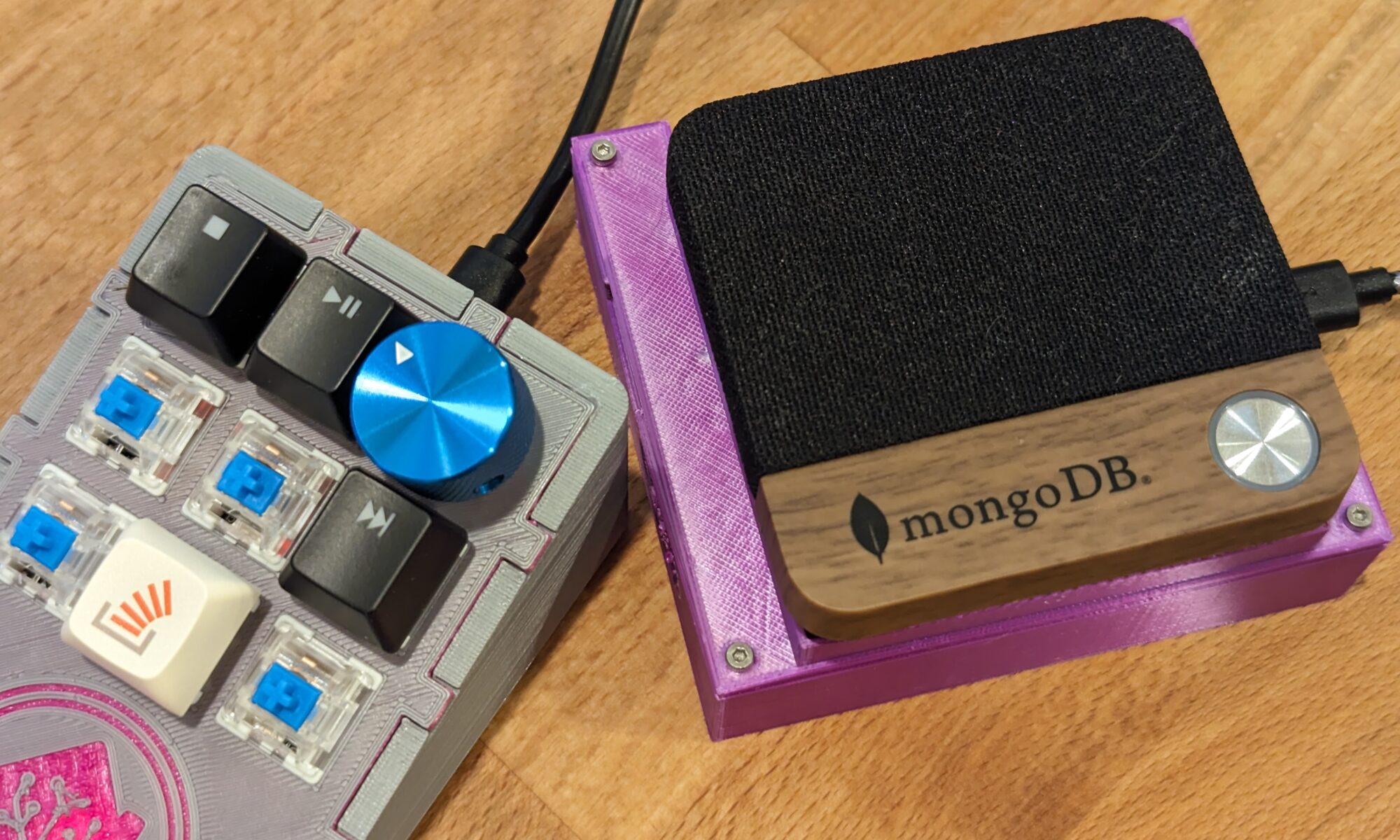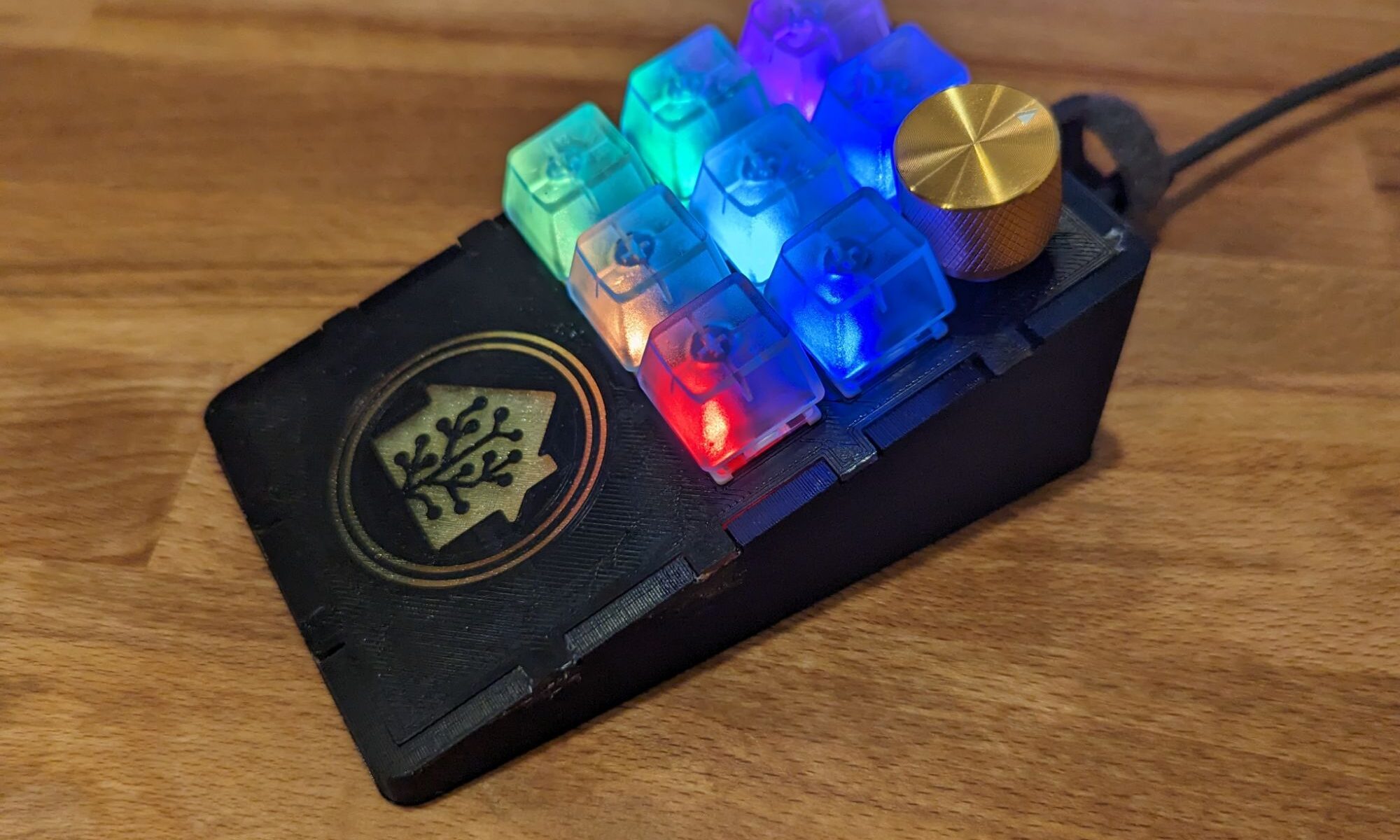The devil is always in the details with large systems like this. I wanted my multi room audio system to feel like a polished product, a professional setup. For that I need to make sure I covered ALL the details, since it’s all the small things that can add up to big issues. Here is a smattering of the details I’ve been working on for my multi room audio system.
Continue reading “Tertiary Parts of an NFC Music Player”Custom Printed Keycaps
So far I’ve been using relegendable key caps for my macro pads and ESP Decks, but I’ve recently found another way. There is an open source keycap generator that can create multi color key caps that can be printed on my Bambu printers. There are a lot of pre-generated caps included with the repository, but I’d like to be able to generate my own custom ones too.
Continue reading “Custom Printed Keycaps”Flashing the ESP32 DevKit V1
On occasion, dealing with embedded hardware can be a bit of a pain. Flashing ESPs is a bit of guess and check from time to time. We’ll be flashing an ESP32 DevKit V2 today. We first need to install the drivers from here: CP210x USB to UART Bridge VCP Drivers – Silicon Labs (silabs.com)
With those installed, plug the USB connection for the controller into your PC (Close out of CURA too!), and from ESPHome web, connect to the COM port for the device. After that, hold down the boot button while selecting “Prepare for First Boot” in the ESPHome web interface, and keep holding it until you see the install begin running (getting the percentage complete, etc). Once that shows up, you can release the button and wait for it to finish flashing.
Tl-Dr
- Install Driver
- Plug in USB
- Connect to COM Port from ESPHome Web
- Hold Boot button while starting the install
Oddity in ESPHome
I ran into an oddity with the latest NFC Deck that I built. When starting up, it would take an hour for home assistant to connect and for me to be able to get logs out of it over WiFi with the ESPHome addon. The ESP I used was no different from the first NFC Deck that I built, and the vast majority of the configuration was the same too.
There were however a few things that were different this time based on how the ESPHome web installer and home assistant adoption process went. The big one I found was the web_server was enabled on the new one. This lets you access a little web page to see everything onboard and interact with it. I guess it just couldn’t handle the number of components and sensors onboard the NFC Deck ( 9 buttons, 27 templates, 9 lights, NFC reader, piezo buzzer, rotary), because removing that from the configuration and uploading a new firmware fixed it.
TlDr: If you have an ESP that takes FOREVER for home assistant to connect to, check to see if the web_server component is included in the build, if it is, try removing it and see if that fixes everything.
Controlling Media Volume with a Rotary Encoder from ESPHome
The NFC Decks that I design and build have rotary encoders onboard. I added them to eventually use in a whole home audio setup, and now that I have some squeezelite speakers to control, I finally have something to use that part of my design on. Let’s take a look at how to control media volume with the rotary encoders.
Continue reading “Controlling Media Volume with a Rotary Encoder from ESPHome”Playing Music on a Tag Reader
The tag reader, and it’s relative the NFCDeck have piezo buzzers in them. These can be used to play monotone music via PWM signal from an ESP. As an addition to this, there’s a simple music file format from the early years of cellphones that’s also supported by this system. Combine these together and we have an interesting little music box.
Continue reading “Playing Music on a Tag Reader”NfcDeck Backlit Key Notification
Since I just finished my new EspDeck model that has backlit keys. I always intended on using these for notifying me of some state in my house so I can take action on it, ideally using the EspDeck itself. This is the first use case I had for the features so I’ll be implementing it so we can start making use of my fancy new NFC Deck to it’s fullest.
Continue reading “NfcDeck Backlit Key Notification”EspDeck w NFC: The NFCDeck
The time has come for a new iteration of the EspDeck. This time it’ll include a few new features, and a new form factor. The new version will include all the features of the Tag Reader, original EspDeck, and a rotary encoder.
Continue reading “EspDeck w NFC: The NFCDeck”




